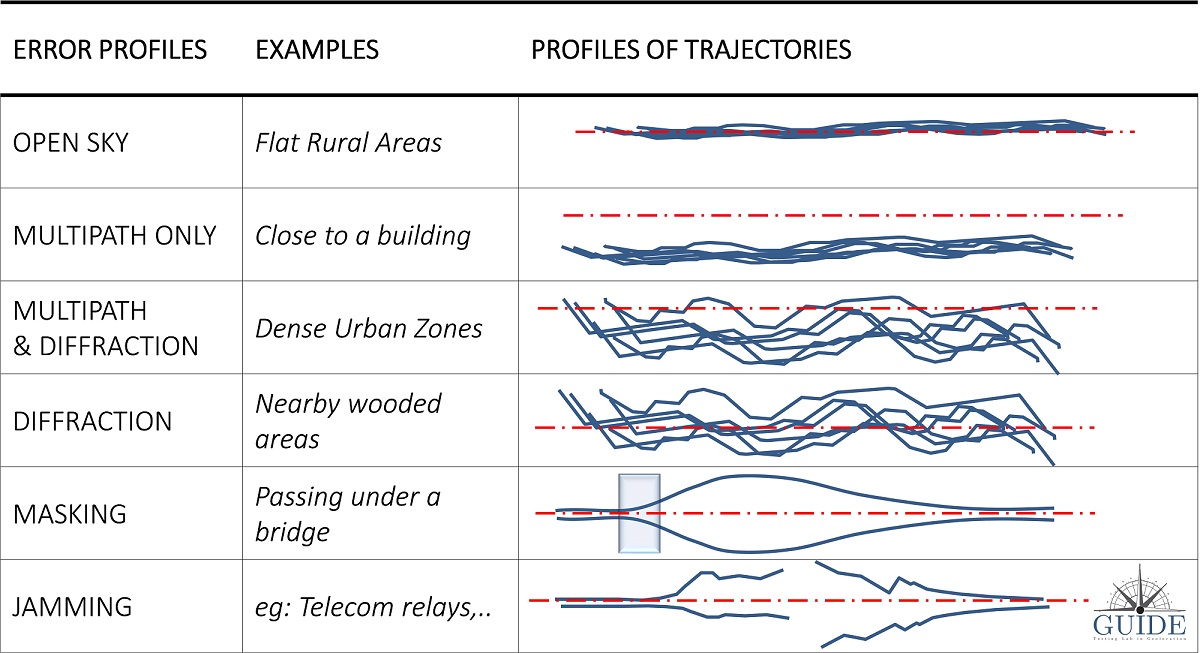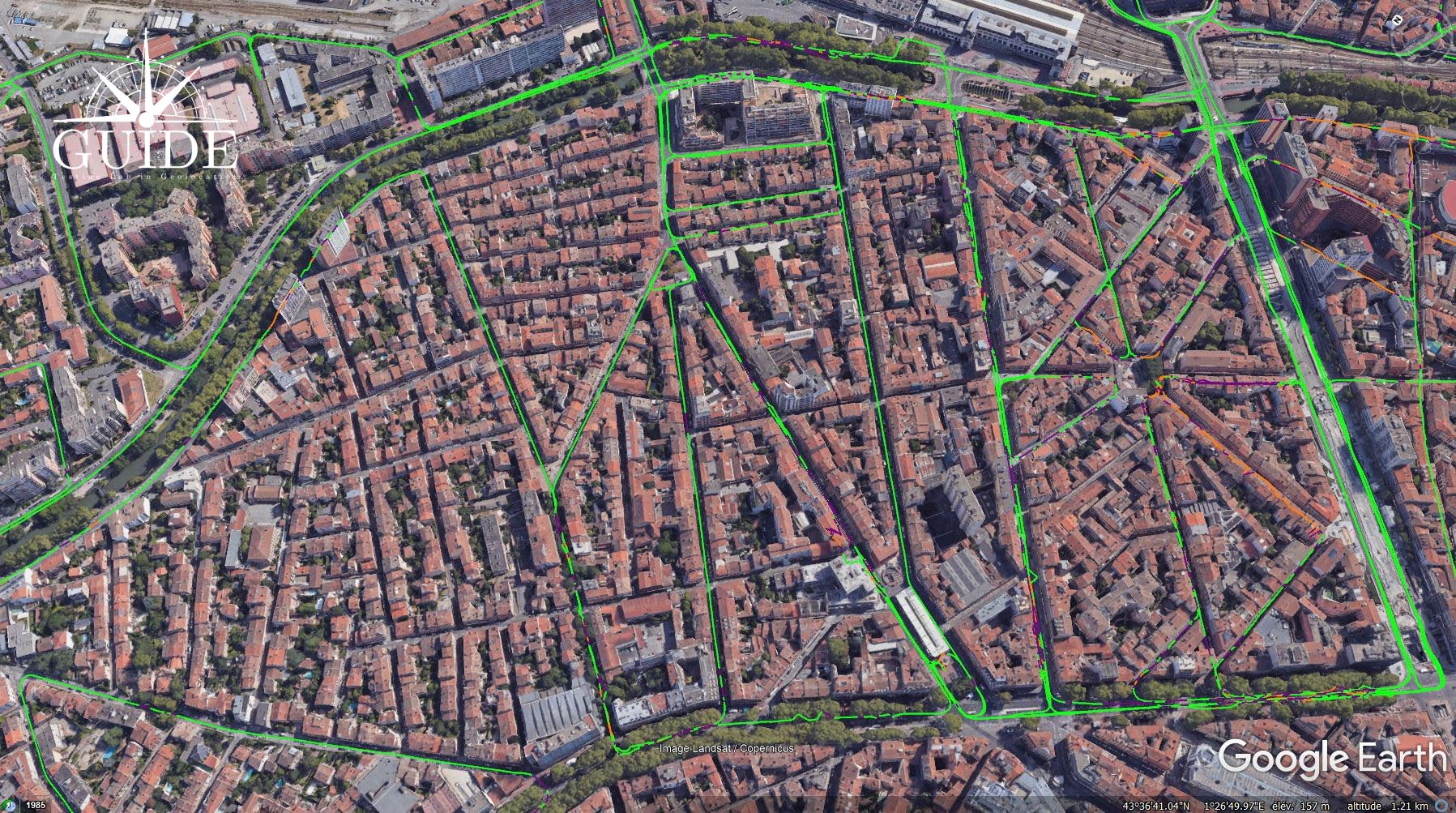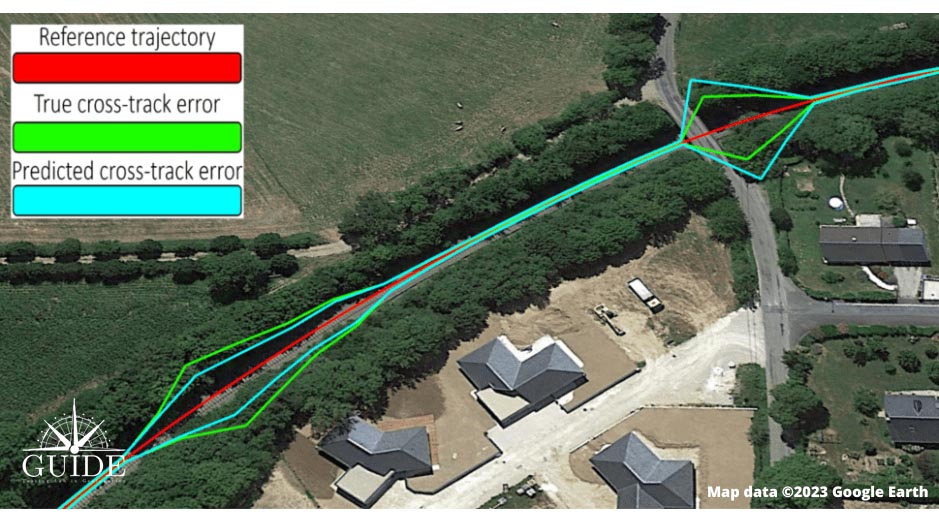GNSS MAP
Mapping of GNSS disturbances in the local environmentWHAT IS A GNSS MAP?
A GNSS map, whether used to road, urban or rail applications, aims to determine geolocation capacity of the GNSS terminals, that means their ability to position themselves accurately at any time.
Satellite signals (GNSS) are disturbed by the local environment. Bridges, landforms, canopies, buildings, and other infrastructures have an impact in the propagation of radiofrequency waves. Thus, the magnitude of position errors can significantly differ depending on the location and the GNSS terminal technology being utilized.
GNSS errors are often confusing, even for informed users. There are two error families depending on the propagation phenomena: random or systematic deviations. Loss of accuracy caused by the local environment are mostly random deviations of measurements from the reference, even if some can be deterministic (see the GNSS Metrology page). In both cases, measurement precision and trueness are predictable for a given GNSS terminal.

Figure 1 – Mapping GNSS disturbances caused by the local environment
CHARACTERISATION OF DISTURBANCES
GUIDE invented and patented a process capable of measuring constraints specific to each environment and of modeling performance profiles corresponding to different types of GNSS terminals.
Thanks to calculation, it becomes possible to predict the behavior of a GNSS receiver, in given environment with a given dynamic. The random errors dispersion zones will be delimited with very acceptable confidence amplitudes. Dispersion zones of position measurements, ie “zones with random errors”, are delimited with very acceptable confidence amplitudes.
GNSS maps are light, a few bytes are enough to define a disturbance zone (bridges, canopies, infrastructures), even before any numerical optimization. This process remains simple and suitable for typical embedded computing.
use cases
The use cases for GNSS maps are set to grow with the deployment of applications based on satellite geolocation.
In urban areas, operators and solution developers need to know in advance the level of performance on the offered services. This prediction is all the most significant when the expected accurate is sub-decimetric.
With increasingly autonomous vehicles, the navigation map, known as “HDMAP”, is designed to integrate information about GNSS disturbances. In operation, it is used by the positioning algorithm to hybridize GNSS measurements with those of other sensors. This system architecture is essential to robust the accuracy, calculations of positions, speeds and headings, with a high level of integrity.
Map hybridizations are faster to develop. They also have a level of integrity that is easier to test.
More broadly, many use cases are organized around geo-sensitives areas such as operation support systems of vehicle fleets.
A concrete example consists of using this GNSS map in the railway sector, specifically for the ERTMS (European Rail Traffic Management System). In this context, the GNSS map can be used to accurately locate the most appropriate areas for implementing virtual balises.
Finally, this GNSS map can be set up and updated automatically by users during their paths.



